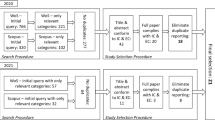Abstract
Object-Process Methodology (OPM), which is a holistic approach to modeling and evolving systems, views objects and processes as two equally important entities that describe the system's structure and behavior in a single model. Unified Modeling Language (UML), which is the standard object-oriented modeling language for software systems, separates the system model into various aspects, each of which is represented in a different view (diagram type).
The exponential growth of the Web and the progress of Internet-based architectures have set the stage for the proliferation of a variety of Web applications, which are classified as hybrids between hypermedia and information systems. Such applications require a modeling approach that is capable of clearly specifying aspects of their architecture, communication, and distributive nature. Since UML and OPM are two candidates for this task, this study has been designed to establish the level of comprehension and the quality of the constructed Web application models using each one of these two approaches.
In the experiment we carried out, third year undergraduate information systems engineering students were asked to respond to comprehension and construction questions about two representative Web application models. The comprehension questions related to the system's structure, dynamics, and distribution aspects. The results suggest that OPM is better than UML in modeling the dynamics aspect of the Web applications. In specifying structure and distribution aspects, there were no significant differences. The results further suggest that the quality of the OPM models students built in the construction part was superior to that of the corresponding UML models.
Similar content being viewed by others
References
AOSD. 2003. The Aspect-Oriented Software Development site, http://aosd.net/.
Booch, G. 1991. Object-Oriented Design with Applications. Redwood: Benjamin Cummings.
Conallen, J. 1999. Building Web Applications with UML. Reading: Addison-Wesley.
DeMarco, T. 1978. Structured Analysis and System Specification. New York: Yourdon.
Dori, D. 1995. Object-process analysis: Maintaining the balance between system structure and behavior. J. Log. Comput. 5(2): 227-249.
Dori, D. 2002a. Object-Process Methodology--A Holistic Systems Paradigm. Heidelberg: Springer Verlag.
Dori, D. 2002b. Why significant UML change is unlikely. Commun. ACM 45(11): 82-85.
Dori, D., Reinhartz-Berger, I., and Sturm, A. 2003. OPCAT--A bimodal CASE tool for object-process based system development. Proc. IEEE/ACM 5th Int. Conf. Enterpr. Inf. Syst. (ICEIS 2003). France, 286-291. Download site: http://www.ObjectProcess.org/.
Gilat, D. 2003. A framework for simulation of discrete events systems based on the object-process methodology. Ph.D. Thesis, Technion-Israel Institute of Technology.
Halpin, T., and Bloesch, A. 1998. A comparison of UML and ORM for data modeling. Proc. 3rd Int. Workshop Eval. Model. Methods Syst. Anal. and Des. (EMMSAD'98). Italy.
Harel, D. 1987. Statecharts: A visual formalism for complex systems. Sci. Comput. Program. 8: 231-274.
Hillegersberg, J. V., Kumar, K., and Welke, R. J. 1998. Using metamodeling to analyze the fit of object-oriented methods to languages. Proc. 31st Hawaii Int. Conf. Syst. Sci. (HICSS'98). Hawaii.
Kim, Y. G., and March, S. T. 1995. Comparing data modeling formalisms for representing and validating information requirements. Commun. ACM 38(6): 103-115.
Littell, R. C., Milliken, G. A., Stroup, W. W., and Wolfinger, R. D. 1996. SAS Systems for Mixed Models. SAS Institute Inc.
Mezini, M., and Lieberherr, K. (1998). Adaptive plug-and-play components for evolutionary software development. Conf. Object-Oriented Program. Syst. Lang. Appl. (OOPSLA'98). Canada, 97-116.
OMG. 2002. The Object Management Group site. Unified Modeling Language Specification--Version 1.4. ftp://ftp.omg.org/pub/docs/formal/01-09-67.pdf.
Otero, M. C., and Dolado, J. J. 2002. An initial experimental assessment of the dynamic modeling in UML. Empir. Softw. Eng. 7: 27-47.
Peleg, M., and Dori, D. 1999. Extending the object-process methodology to handle real-time systems. J. Object-Oriented Program. 11(8): 53-58.
Peleg, M., and Dori, D. 2000. The model multiplicity problem: Experimenting with real-time specification methods. IEEE Trans. Softw. Eng. 26(8): 742-759.
Peterson, J. L. 1981. Petri Nets Theory and the Modeling of Systems. Englewood Cliffs: Prentice Hall.
Reinhartz-Berger, I. 2003. Developing web applications with object-oriented approaches and object-process methodology. Ph.D. Thesis, Technion-Israel Institute of Technology. http://mis.hevra.haifa.ac.il/∼iris/research/OPMwebThesis.pdf.
Reinhartz-Berger, I., Dori, D., and Katz, S. 2002a. OPM/Web--object-process methodology for developing web applications. Ann. Softw. Eng.-Spec. Issue Object-Oriented Web-Based Softw. Eng. 13: 141-161.
Reinhartz-Berger, I., Dori, D., and Katz, S. 2002b. Open reuse of component designs in OPM/Web. Proc. Comput. Softw. Appl. Conf. (COMPSAC'2002). England, 19-26.
Reinhartz-Berger, I., Dori, D., and Katz, S. 2003. Modeling code mobility and migration: An OPM/Web approach. Accepted to Int. J. Web Eng. Technol. (IJWET).
Rumbaugh, J., Blaha, M., Premerlani, W., Eddy, F., and Lorenson, W. 1991. Object-Oriented Modeling and Design. Englewood Cliffs: Prentice-Hall.
Shoval, P., and Shiran, S. 1997. Entity-relationship and object-oriented data modeling--An experimental comparison of design quality. Data Knowl. Eng. 21:297-315.
Siau, K., and Cao, Q. 2001. Unified Modeling Language (UML)--A complexity analysis. J. Database Manage. 12(1): 26-34.
Verheijen, G. M. A., and Van Bekkum, J. 1982. NIAM: An information analysis method. In T. W. Olle, et al. (eds.), Information Systems Design Methodologies: A Comparative Review. North-Holland, 289-318.
Yourdon, Y., and Constantine, L. L. 1979. Structured Design. Englewood Cliffs: Prentice Hall.
Author information
Authors and Affiliations
Rights and permissions
About this article
Cite this article
Reinhartz-Berger, I., Dori, D. OPM vs. UML--Experimenting with Comprehension and Construction of Web Application Models. Empirical Software Engineering 10, 57–80 (2005). https://doi.org/10.1023/B:EMSE.0000048323.40484.e0
Issue Date:
DOI: https://doi.org/10.1023/B:EMSE.0000048323.40484.e0




